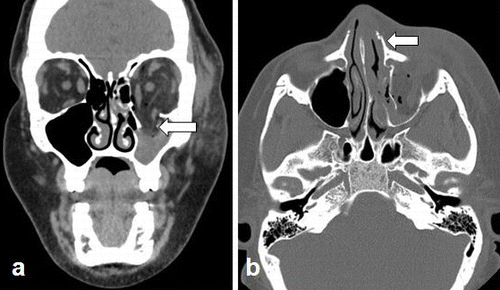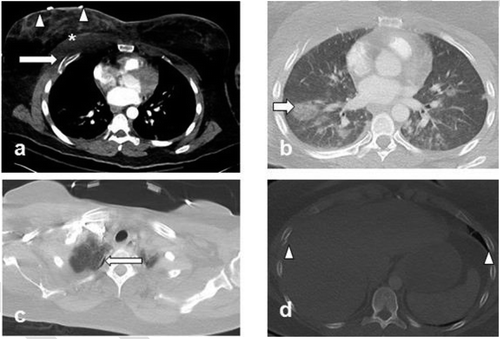Radiology Spotlights Disturbing Uptick of Intimate Partner Violence During Pandemic
Severe intimate partner violence is five-fold higher this year than in the previous three – radiologists have the opportunity to proactively identify at-risk patients.
Radiologists are seeing the physical evidence of the anticipated – and feared – increase in intimate partner violence (IPV) during the COVID-19 pandemic. While there are fewer victims reporting abuse this year than in the previous three years, the severity of injuries has increased.
Pre-pandemic, providers were already trying to augment their efforts to pinpoint patients who have been IPV victims, but a study published Aug. 13 in Radiology revealed not only an unsettling upward trend in physical injuries, but it also highlighted the value of a radiologist in identifying someone who might need help.
“Radiologists and other healthcare providers should proactively participate in identifying IPV victims and reach out to vulnerable communities as an essential service during the pandemic and other crisis situations,” said principal investigator Bharti Khurana, M.D., director of the Trauma Imaging Research and Innovation Center at Brigham and Women’s Hospital.
Images in a 35-year-old female victim was strangulated and hit on the face multiple times by her boyfriend. (a) Coronal reconstructed non-contrast face CT demonstrates acute comminuted inferiorly displaced fracture of the left inferomedial orbital wall (arrow), with herniation of fat and inferior rectus muscle into the left maxillary sinus. Asymmetric subcutaneous swelling is noted on the left. (b) Axial face CT image demonstrates a minimally displaced left nasal bone fracture (arrow). The patient underwent surgical repair of the left orbital wall. Courtesy: Radiology

Under regular circumstances, the incidence of IPV in the United States is already high. According to a 2015 national survey, 25 percent of women and nearly 10 percent of men have experienced at least one episode during their lives. Now, the need to close businesses and schools, as well as exercise isolation and social distancing, has increased the risks during the pandemic, the team said.
“Emerging data shows that since the outbreak of COVID-19, reports of intimate partner violence have increased worldwide as a result of mandatory ‘lockdowns’ to curb the spread of the virus,” the researchers explained.
And, as most hospital personnel are overwhelmed with the needs of treating patients who are positive for the virus, radiologists are now playing a critical role in recognizing which patients have experienced IPV.
Images in a 38- year-old female victim struck in the face and chest by her boyfriend. The patient sustained multiple right sided rib fractures. (a) Axial post contrast chest CT demonstrates a comminuted right fourth rib fracture (arrow), extensive swelling of right breast (arrowheads) and anterior chest wall muscle (asterisk), suggesting contusion and intramuscular hematoma. (b) Ground-glass opacity in the right lung peripherally suggestive of lung contusion (arrow). (c) Additional chest CT image through apices on lung window demonstrates trace right apical pneumothorax (arrow). (d) Bilateral rib fractures (arrowheads). Courtesy: Radiology

Identifying the IPV Increase
To assess the extent and severity of this problem in the pandemic, the team conducted a retrospective observational analysis from March 11, 2020, to May 3, 2020. They reviewed radiology reports and images for signs of abuse, and they developed a grading system (mild, moderate, severe, and very severe) based on the location (head and face, neck, chest, abdomen, extremities, and spine) and depth of physical injuries (superficial or deep). They, then, compared these injuries to the same time frames from 2017, 2018, and 2019.
All total, the team identified 62 IPV victims in 2020, 104 in 2019, 106 in 2018, and 146 in 2017.
The team attributed the drop in patient numbers this year to patients opting not to seek healthcare due to fear of the COVID-19 virus.
According to their evaluation, Khurana’s team determined that, while they saw fewer patients exhibiting IPV evidence on imaging, the degree of these injuries was far more severe than in their comparison periods from 2017 to 2019. In the spring of this year, the team found 26 cases of IPV violence. There were 20 in 2019, 7 in 2018, and 15 in 2017. These numbers reveal that physical IPV was 1.9 times greater in 2020. The team also determined that the majority of victims in 2020 (65 percent) were white compared to 26 percent in the prior three years.
The situation is even more dire with severe IPV injuries, the team said. Based on their assessment, they saw a five-fold increase in severe cases in 2020 compared to previous years. Providers saw more evidence of both superficial and deep injuries, including injuries from high-risk abuse mechanism of strangulation, stabbings, burns, or the use of weapons, such as knives, guns, or other objects that can cause deep distress to internal organs. For 2020, the number of deep injuries was 28 compared to 16 from the previous three years combined, they noted. They postulated this outcome reflects that patients are only choosing to seek care when their situations have reached a later, more dangerous level.
What the Radiologist Can Do
With IPV violence playing role in 58 percent of deaths among women from homicide, healthcare providers – particularly radiologists – can be pivotal in identifying patients who are most at risk, the team said.
“With high-risk physical abuse being highly associated with homicide, a smaller number of victims seeking medical care, and emergency medicine physicians overwhelmed with treating COVID-19 victims,” they said, “radiologists should embrace the opportunity to provide patient-centered care by integrating longitudinal imaging data and providing early identification of victims.”
Even if a victim is not forthcoming about her or his situation, a radiologist can make an educated determination based upon repeated imaging use, the location of injuries and any patterns consistent with IPV, old injuries, or injuries that are not consistent with the patient’s explanation of what happened. And, making these identifications could become even easier as radiologists gain confidence and comfort with artificial intelligence algorithm and clinical decision support systems.
“We believe that this is the right moment for radiologists to play a critical role as a team in identifying victims of IPV and become an integral member of the multi-disciplinary teams providing direct care to these patients,” the team concluded.
Can CT-Based AI Radiomics Enhance Prediction of Recurrence-Free Survival for Non-Metastatic ccRCC?
April 14th 2025In comparison to a model based on clinicopathological risk factors, a CT radiomics-based machine learning model offered greater than a 10 percent higher AUC for predicting five-year recurrence-free survival in patients with non-metastatic clear cell renal cell carcinoma (ccRCC).
The Reading Room Podcast: Emerging Trends in the Radiology Workforce
February 11th 2022Richard Duszak, MD, and Mina Makary, MD, discuss a number of issues, ranging from demographic trends and NPRPs to physician burnout and medical student recruitment, that figure to impact the radiology workforce now and in the near future.
Study Suggests AI Software May Offer Standalone Value for X-Ray Detection of Pediatric Fractures
April 9th 2025Artificial intelligence (AI) software demonstrated a 92 percent sensitivity for detecting fractures in a study involving over 1,600 X-rays from a tertiary pediatric emergency department.